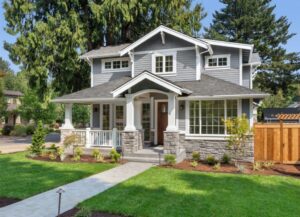
Creating spaces that cater to both children and adults can be a challenging task, but with the right design elements, it is possible to create a space that is both fun and functional for everyone. Kid-friendly spaces should be engaging, safe, and visually appealing to encourage creativity and play while also being practical for everyday use.
Key Design Elements for Kid-Friendly Spaces:
- Bright Colors: Incorporating bright and vibrant colors can instantly make a space more inviting and playful for children. Consider using a mix of primary colors or pastel shades to create a visually stimulating environment.
- Durable Materials: Choose materials that are durable and easy to clean to withstand the wear and tear of children’s activities. Opt for stain-resistant fabrics, sturdy furniture, and easy-to-clean surfaces to ensure longevity.
- Interactive Features: Include interactive elements such as chalkboard walls, climbing structures, or play areas to encourage active play and creativity. These features can also double as functional decor that adds character to the space.
- Storage Solutions: Keep the space organized and clutter-free by incorporating ample storage solutions such as bins, baskets, and shelves. Encourage children to participate in tidying up by providing designated storage spaces for toys and supplies.
- Multifunctional Furniture: Opt for furniture pieces that serve multiple purposes, such as convertible tables, storage ottomans, or bunk beds with built-in desks. This not only maximizes space but also adds versatility to the room’s layout.
Tips for Designing Kid-Friendly Spaces:
- Involve Children in the Design Process: Consult with children to understand their preferences and interests when designing the space. Incorporating their input can make the space more personalized and engaging for them.
- Create Zones for Different Activities: Divide the space into zones for play, study, and relaxation to cater to different needs and activities. This helps in creating a well-rounded environment that accommodates various functions.
- Include Comfortable Seating: Provide comfortable seating options such as bean bags, floor cushions, or soft rugs for children to relax and unwind. Comfortable seating encourages children to spend time in the space and promotes a cozy atmosphere.
- Embrace Creativity and Imagination: Allow space for creativity and imagination by incorporating elements such as art supplies, books, and interactive games. Encourage children to express themselves through art and play to foster their development.
- Safety First: Ensure that the space is child-proofed and safe for children to explore independently. Use safety gates, corner protectors, and secure furniture to prevent accidents and injuries.
By combining fun design elements with functionality, it is possible to create kid-friendly spaces that everyone will love. Whether it’s a playroom, bedroom, or common area, designing with children in mind can lead to spaces that are engaging, practical, and enjoyable for all ages.









